目次
- 1 Iran’s Victory Claims After US Nuclear Strikes
- 1.1 Khamenei’s “Victory Declaration” – Content and Background
- 1.2 Details of US Airstrikes on Nuclear Facilities and Weapons Used
- 1.3 Major Divisions in Assessment of Attack Effectiveness
- 1.4 Detailed Analysis of Nuclear Facility Damage
- 1.5 Expert Comprehensive Assessment
- 1.6 Why Does the US Seek to Prevent Iran’s Nuclear Development?
- 1.7 Historical Background of Israel-Iran Confrontation
- 1.8 Course of Current Conflict and Changes in US Response
- 1.9 Important Differences in US and Israeli Policies Toward Iran
- 1.10 International Community Response and National Positions
- 1.11 Detailed Analysis of Strait of Hormuz Closure Risk
- 1.12 Impact of Iran’s Nuclear Development Suspicions on Middle East Stability
- 1.13 Future Middle East Outlook
- 1.14 Impact on Japanese Economy and Future Response
- 1.15 Conclusion
- 1.16 Related Articles
- 1.17 Reference Sites
Iran’s Victory Claims After US Nuclear Strikes
On June 26, 2025, Iran’s Supreme Leader Ali Khamenei delivered his first televised address following the ceasefire agreement with Israel, claiming “victory” over Israel and the United States. However, behind this victory declaration lies complex assessments of the effectiveness of US airstrikes on nuclear facilities and crucial factors that will shape the future of the Middle East region. This article provides a comprehensive analysis of this complex situation based on detailed research materials.
Khamenei’s “Victory Declaration” – Content and Background
In his June 26 speech, Khamenei stated that Israel had been “almost collapsed” and “crushed” by Iranian attacks, celebrating victory over Israel. Furthermore, regarding American military intervention, he emphasized that it occurred because Israel felt it would completely collapse, adding that it “achieved nothing” and “no significant results were obtained.”
Particularly noteworthy was his response to President Trump’s “unconditional surrender” demand. Khamenei firmly declared that “Iran will never surrender,” demonstrating Iran’s unwavering stance to both domestic and international audiences.
Implications of Ceasefire Acceptance and Supreme Leader’s Authority
Interestingly, this “victory declaration” suggests acceptance of the ceasefire. Iran’s Supreme Leader holds final decision-making authority on important national matters, and his intentions were likely reflected in the ceasefire agreement announced on the 24th. This once again demonstrates the absolute power of the Supreme Leader in Iran’s political system.
Period of Hiding Due to Assassination Concerns
Before the speech, Khamenei had reportedly been in hiding since the start of combat with Israel on the 13th, fearing assassination. It was suggested he might have been sheltering in an underground bunker, and he had not appeared in public for over a week since his television speech on the 18th. State television received messages from viewers concerned about his safety, making his return to public view significant in dispelling domestic anxiety and demonstrating the regime’s continued strength.
Details of US Airstrikes on Nuclear Facilities and Weapons Used
On June 21, the US military conducted airstrikes targeting three nuclear facilities in central Iran: Fordow, Natanz, and Isfahan. The following weapons were used in this attack:
- Bunker Buster bombs (GBU-57): 14 large penetrating bombs reportedly dropped
- Tomahawk cruise missiles: Used as precision-guided weapons
- B-2 stealth bombers: Strategic bombers difficult to detect by radar deployed
Major Divisions in Assessment of Attack Effectiveness
There are significantly divergent assessments of the attack’s effectiveness within and outside the US government, with considerable confusion in the information.
1. President Trump’s Claims (Most Optimistic Assessment)
President Trump emphasized that Iran’s main nuclear enrichment facilities were “completely destroyed” and declared it a “great success.” He reportedly believes that dropping 14 bunker buster bombs (GBU-57) would bring complete destruction. He also denied reports that Iran had moved nuclear materials before the attack and claimed the strikes set Iran back “decades.”
2. Defense Intelligence Agency (DIA) Initial Assessment (More Cautious View)
The initial assessment compiled by the Pentagon’s Defense Intelligence Agency concluded that the US strikes did not destroy the core components of Iran’s nuclear development program, only setting the program back “by a few months.” Sources familiar with this assessment point out:
- Iran’s enriched uranium stockpile was not destroyed
- Centrifuges remain “virtually intact”
- Iran had already moved enrichment-related facilities and equipment
3. European Officials’ Views (Financial Times Report)
European officials believe most of Iran’s stockpiled highly enriched uranium remains intact, providing the following assessment:
- While extensive damage is confirmed at Fordow nuclear facility, structural destruction is not complete
- Approximately 408 kilograms of 60% enriched uranium was stored not at Fordow but dispersed across multiple locations
- Since the US publicly announced it was considering an attack, Iran may have moved high-enriched uranium stockpiles from facilities
4. CIA Director’s Claims (Intermediate Assessment)
CIA Director Ratcliffe stated that based on evidence obtained by the CIA, several major Iranian nuclear facilities were destroyed and would take years to rebuild.
5. Iranian Statements and Response
Mohammad Eslami, head of the Atomic Energy Organization of Iran (AEOI), stated that preparations were made in advance to restore nuclear activities and plans were established to prevent interruption of atomic industry production and activities, clarifying their position to “continue nuclear activities.” Iran is believed to have dispersed its enriched uranium.
Detailed Analysis of Nuclear Facility Damage
Natanz Nuclear Facility
At Natanz, Iran’s main enrichment hub:
- Surface facility (Pilot Fuel Enrichment Plant – PFEP): Completely destroyed
- Deep underground (Fuel Enrichment Plant – FEP): Assessed as not physically damaged and functionality retained
Fordow Nuclear Facility
The enrichment facility deep underground in solid rock:
- No damage confirmed to main facilities
- Difficult to destroy with conventional weapons possessed by Israel
- Large penetrating bombs like the US GBU-57 considered necessary
Isfahan Nuclear Facility
- Uranium Conversion Facility (UCF) and others partially destroyed
- Abundant uranium hexafluoride (UF6) inventory exists
- No disruption expected to short-term supply
Expert Comprehensive Assessment
Experts assess that while these attacks caused short-term delays to Iran’s nuclear development, they did not achieve decisive capability elimination, and the ability to weaponize in a short period remains. They point out that neutralizing nuclear development facilities scattered throughout Iran, especially those underground, is far more complex than destroying surface targets.
Why Does the US Seek to Prevent Iran’s Nuclear Development?
1. Nuclear Non-proliferation and Regional Threats
The US believes that if Iran possesses nuclear weapons, it would threaten world order and pose a serious threat particularly to Middle Eastern countries including Israel. Iran’s nuclear possession could disrupt the Middle East balance of power, making it difficult for Middle Eastern countries to support Iran. Since Iran’s nuclear development suspicions emerged in 2002, the US has clearly stated its commitment to preventing nuclear development.
3. Concerns About “Breakout Capability”
The US views Iran as possessing the technical capability to manufacture nuclear weapons and, if there is political will, could produce nuclear weapons in a short time – developing “breakout capability.” According to International Atomic Energy Agency (IAEA) reports, Iran’s highly enriched uranium stockpile exceeds 400 kilograms, equivalent to 9 nuclear bombs if enriched to weapons-grade.
4. Withdrawal from Past Nuclear Agreement and Stalled Negotiations
The Iran nuclear deal (JCPOA) was concluded in 2015, but President Trump (then) unilaterally withdrew from the agreement in 2018 and reinstated severe economic sanctions, triggering acceleration of Iran’s nuclear development. Subsequently, President Trump resumed negotiations for a new nuclear agreement, but talks stalled for an extended period, and the perception that Iran had no intention of abandoning nuclear development is considered a factor in the decision to attack.
5. Possibility of Regime Change and Divergence from Official Statements
Some reports suggested that Israeli actions and President Trump’s stance indicated military action aimed at overthrowing Iran’s regime (as of June 18, 2025). There were also concerns that attacks could deliver a devastating blow to Iranian leadership, leading to the collapse of the revolutionary regime or national fragmentation. However, the US Secretary of Defense stated clearly that the airstrikes were not aimed at overthrowing Iran’s current regime under Supreme Leader Khamenei.
Ultimately, the US red line is “Iran not obtaining nuclear weapons,” namely “not recognizing weaponization of nuclear capability,” and it’s noted that they may not necessarily demand zeroing all enrichment activities. This is believed to be based on a realistic recognition that demanding complete nuclear abandonment could instead trigger military conflict.
Historical Background of Israel-Iran Confrontation
Deteriorating Relations Since the Iranian Islamic Revolution (1979)
The previously friendly relations between Iran and Israel deteriorated with the establishment of the Islamic fundamentalist regime. Iran began denouncing Israel for illegally occupying Jerusalem, a holy site of Islam, and adopted an anti-Israel stance.
Continuation of Proxy Wars
Iran supports Islamic armed groups hostile to Israel, such as Hamas in Palestine, Hezbollah in Lebanon, and the Houthis in Yemen. Israel views these forces with alarm and considers Iran’s expanding influence a threat. While there has been no direct war between the two countries, indirect conflicts such as proxy wars, cyber attacks, and drone attacks have continued throughout the Middle East.
Emergence of Nuclear Development Suspicions
Since 2002, suspicions about Iran’s nuclear development emerged, and Israel has claimed this as a threat to national survival, previously taking a stance of not ruling out attacks on nuclear facilities.
JCPOA (Iran Nuclear Agreement) and Its Withdrawal
While a nuclear agreement was reached between Iran and Western countries in 2015, Israel opposed it, criticizing that the possibility remained for Iran to resume nuclear weapons. In 2018, President Trump unilaterally withdrew from the nuclear agreement and reinstated severe economic sanctions, prompting Iran to accelerate nuclear development in response.
Course of Current Conflict and Changes in US Response
Israel’s Preemptive Strike (June 13, 2025)
Israel attacked Iran’s nuclear-related and military facilities, killing senior Revolutionary Guard officials, initiating the exchange of attacks. Israel is believed to have launched the attack based on:
- Weakening of Hamas and Hezbollah
- Prime Minister Netanyahu’s domestic political considerations (avoiding parliamentary dissolution)
Changes in Trump Administration’s Response
Initially, the Trump administration took a cold response to Israel’s solo attack, stating “the US is not involved.” Trump reportedly hoped Iran would become more open to negotiations.
However, as it became clear that Israel’s attack had achieved “results,” Trump shifted to a more hawkish stance. Combined with Iran maintaining a hardline position, this led to the airstrikes on three nuclear facilities on the 21st. The background includes Israel’s request for US cooperation, judging that only US bunker busters and B-2 bombers could destroy Iran’s underground nuclear facilities.
Iran’s Retaliation and “Kabuki” Diplomacy
In retaliation for US airstrikes on nuclear facilities, Iran launched 14 missile attacks targeting the US military base in Qatar. However, this attack was notified in advance to various parties including the US and was intercepted, resulting in no casualties. This is seen as “kabuki”-like diplomatic maneuvering by Iran, attempting to provide a “pressure release” for domestic hardliners while avoiding escalation to direct full-scale war with the US.
Announcement of Ceasefire Agreement
On the 23rd, President Trump posted on social media that a “complete and comprehensive ceasefire was agreed” between Israel and Iran. Iran and Israel also accepted the ceasefire. However, reports indicate attacks continued after President Trump’s announcement, leaving uncertainty about the ceasefire’s effectiveness and subsequent developments.
Important Differences in US and Israeli Policies Toward Iran
Differences in Goals and Threat Perception Regarding Nuclear Development
US Perception
- Absolutely refuses to allow Iran to possess nuclear weapons
- “Red line” is preventing nuclear weapons acquisition
- Recognizes demanding zero enrichment activities is unrealistic
- Expects short-term resolution, positioning himself as “peace candidate”
Israeli Perception
- Views nuclear development as a serious threat to national survival
- Consistently claims Iran’s nuclear development program has military purposes
- Considers even “breakout capability” dangerous
- Criticized Iran nuclear deal (JCPOA) as half-measure
- Advocates complete dismantlement via “Libya model”
Differences in Military Action Stance and Objectives
US Stance
- Attacked three nuclear-related facilities but doesn’t aim for regime change
- “Not at war with Iran, but with Iran’s nuclear program”
- Limited attacks, avoiding excessive escalation
- Calls for peace negotiations, leaving room for nuclear talks resumption
Israeli Stance
- Believes threat won’t disappear without defeating “axis of resistance” headquarters
- Attacked after weakening Hamas, Hezbollah, Assad regime
- Always reserves right to resume attacks if threats increase
- Willing to accept sacrifices for national security
International Community Response and National Positions
UN Security Council
This conflict was taken up as an emergency agenda item, but effective resolutions have not been reached due to US-China-Russia confrontation.
EU Countries
EU countries moved to mediate ceasefire, focusing on diplomatic solutions and avoiding humanitarian crisis expansion. They proposed holding ceasefire talks in Vienna or Geneva and increased diplomatic pressure, though member states show varying degrees of response.
China and Russia
Both countries maintain apparent neutrality while strengthening economic and military relations with Iran. China particularly takes an unofficially pro-Iran stance based on securing geopolitical interests through the “Belt and Road” initiative. Russia forms a strategic partnership with Iran, which takes an anti-American stance, based on geographical influence secured through the Syrian civil war.
Regional Powers
Regional powers such as Saudi Arabia, Turkey, and UAE, wary of conflict spillover to their countries, show mediation movements behind the scenes. Saudi Arabia in particular is advancing diplomatic restoration with Iran while strengthening multilateral diplomacy including approaching BRICS.
Japan’s Response and Challenges
The Japanese government stated it “welcomes” the ceasefire announcement and expressed its intention to ensure early de-escalation and the safety of Japanese nationals. However, it’s pointed out that approving America’s attack without UN resolution amounts to recognizing “rule by force,” potentially undermining legitimacy in deterring China, which doesn’t rule out using force against Taiwan.
Detailed Analysis of Strait of Hormuz Closure Risk
The ceasefire is temporary, and the risk remains that Iran could effectively close the Strait of Hormuz, causing oil price spikes that would damage not only the US but the global economy.
Oil Price Surge and Energy Supply Anxiety
- Major anxiety about overall Middle Eastern oil supply
- Oil prices could exceed $100 per barrel
- Gasoline prices could exceed 200 yen
- Fuel price increases directly impact household and business activities
- Further increased inflationary pressure
Special Impact on Japan
Although Japan has virtually stopped importing Iranian oil since 2019, it depends on the Middle East for about 90% of its oil imports, and closure of the Strait of Hormuz is expected to have serious impacts on the Japanese economy.
International Logistics Disruption and Cost Increases
- Many shipping companies temporarily change Middle East routes
- Shipping days between Asia and Europe extend by 5-7 days from normal
- Airlines also restrict flights over Middle East airspace
- Reduced air cargo flights
- Major impact on time-sensitive cargo like electronic components and pharmaceuticals
Insurance Premium Surge
Insurance companies raise war risk insurance (WRI) premiums for vessels passing through the Middle East by 2-3 times previous rates, significantly increasing logistics costs. This directly affects corporate pricing and profitability, with profit squeeze risks becoming real especially for small and medium enterprises.
Impact on Industry and Supply Chains
Japanese companies dependent on raw materials and intermediate goods from the Middle East, particularly the following industries, are affected:
- Automotive parts
- Chemical products
- Precision equipment
- Manufacturing
- Construction
- Retail
These companies face procurement delays and cost increases, making diversification of procurement sources and logistics routes and strengthening business continuity plans (BCP) urgent priorities.
Global Economic Destabilization
If conflict uncertainty continues, it could affect investment appetite and corporate capital investment plans. The IMF and World Bank show prospects for slowing growth rates in Asian economies including Japan in 2025, highlighting vulnerability to external shocks.
Iran is believed to retain the option of Strait of Hormuz closure as a warning and threat to compensate for its military inferiority. The commander of Iran’s Revolutionary Guards stated, “When imminent threats reach Iran, closure of the Strait of Hormuz becomes an agenda item.”
Impact of Iran’s Nuclear Development Suspicions on Middle East Stability
Nuclear Proliferation Possibility and Regional Arms Race
Iran becoming nuclear-armed, or at least a “nuclear threshold state” possessing “breakout capability” to manufacture nuclear weapons in a short time, carries considerably high risk of triggering a domino effect of nuclear development competition in the Middle East.
Particularly noteworthy are the movements of Saudi Arabia and Turkey. Both countries are expected to immediately follow if Iran’s nuclear development progresses, and their leaders have already expressed promotion of nuclear development. Saudi Crown Prince Mohammed bin Salman stated last year that if Iran possesses nuclear weapons, Saudi Arabia would quickly follow, and it’s noted that Saudi Arabia previously supported over 60% of Pakistan’s nuclear development costs as the “Islamic bomb.”
Destabilization of Regional Power Balance
Iran’s nuclear possession could disrupt the Middle East balance of power, making it difficult not only for Israel but also Middle Eastern countries to support Iran. Iran supports Islamic armed groups hostile to Israel (Hamas in Palestine, Hezbollah in Lebanon, etc.), and this expansion of influence through the “axis of resistance” is viewed as a threat by Israel.
Furthermore, Iran actively promotes its ballistic missile program closely linked to its nuclear development plan, which is pointed out as advantaging Iran’s position in Middle East security.
Complication of International Relations and Heightened Tensions
The US attacking Iran without UN resolution sets a precedent for recognizing “rule by force” ignoring international law, potentially lowering the hurdle for China’s actions, which doesn’t rule out using force against Taiwan.
From a national security perspective, Iran may deepen relations with China, Russia, and North Korea, with particular views that North Korea is cooperating in Iran’s nuclear development. This suggests the possibility of forming an “axis” of Tehran, Moscow, Beijing, and Pyongyang.
Future Middle East Outlook
Iran’s Weakening and Regime Maintenance
Israel’s attacks damaged Iran’s military power, particularly missile capabilities, and missile factories were also damaged, making military recovery difficult. Iran’s “invincibility myth” has collapsed, raising concerns about tightening domestic control.
However, Iran’s leadership considers regime survival the top priority and appears to believe new diplomatic engagement is necessary to maintain it.
Seeking New Alignments
Isolated in the Middle East, Iran may deepen relations with China, Russia, and North Korea from a national security perspective. In particular, views that North Korea is cooperating in Iran’s nuclear development make this an important point in exploring Iran’s future position in the Middle East. Iran may explore transitioning to an axis system of Tehran-Moscow-Beijing-Pyongyang to escape its current predicament.
Direction of Nuclear Negotiations
US Vice President Vance seeks guarantees not to rebuild destroyed Iranian nuclear development plans as a long-term solution. Meanwhile, while Iran claims to maintain the religious edict (fatwa) against making nuclear weapons, movements to discuss nuclear weapons possession have emerged domestically, feeling that conventional weapons don’t provide effective deterrence against Israel. This represents a significant change for Iran and could affect future nuclear negotiations.
Continued Strait of Hormuz Risk
The ceasefire is temporary, and views remain that Iran could effectively close the Strait of Hormuz, with resulting oil price spikes damaging not only the US but the global economy.
Impact on Japanese Economy and Future Response
Energy Security
Middle East tensions are directly linked to stable energy supply (oil and LNG) for Japan. Strait of Hormuz navigation restrictions or oil price spikes could seriously impact the Japanese economy.
Impact on Corporate Activities
Japanese companies face multifaceted impacts including raw material and fuel price increases, maritime transport disruption, and local base security. In fields like automotive parts, chemical products, and precision equipment, measures such as securing alternative procurement routes and supplier diversification have begun.
Diplomatic Security
Japan needs to maintain its alliance with the US while leveraging traditional friendly relations with Iran to secure dialogue channels and develop independent multilateral diplomacy. Protection of Japanese residents and securing stable sea lanes are pressing issues.
Conclusion
While Khamenei’s “victory declaration” has strong domestic propaganda aspects, it shows Iran hasn’t completely capitulated. US nuclear facility attacks achieved certain results but didn’t completely eradicate Iran’s nuclear development capability.
Future Middle East dynamics could change significantly depending on Iran’s nuclear development trajectory, formation of new international alignments, and US-Israel responses. For Japan too, constructing an independent diplomatic strategy considering energy security and economic impacts has become urgent.
While a ceasefire was achieved, structural Middle East conflicts remain unresolved, and unpredictable situations will likely continue. The international community needs to seek long-term solutions while balancing nuclear non-proliferation and regional stabilization. In particular, the nuclear proliferation domino effect triggered by Iran’s nuclear development suspicions, Strait of Hormuz closure risks, and formation of new international axes could significantly impact future international order.
Related Articles
- US Strikes on Iran: 12-Day Middle East Crisis
- Trump’s Iran Decision: 2 Weeks to War or Peace
- Iran’s Missing 409kg Uranium: Nuclear Crisis Escalates
- Trump on Iran: Too Late to Talk as Tensions Escalate
Reference Sites
CNN.co.jp | JETRO | YouTube | JBpress | SBI Holdings | Forbes JAPAN | Aviation Military Affairs | Dai-ichi Life Research Institute
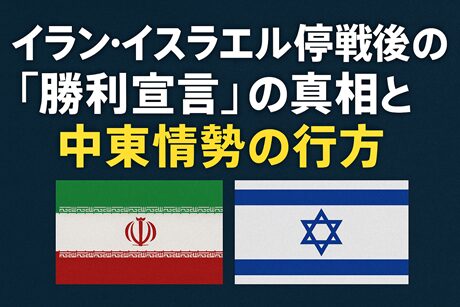


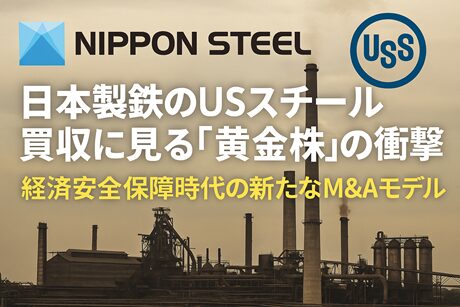


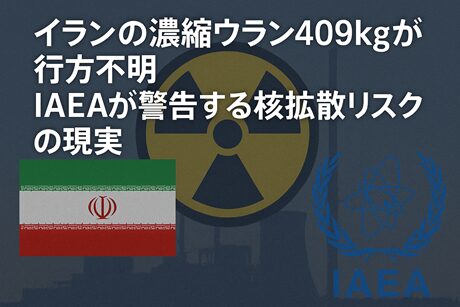
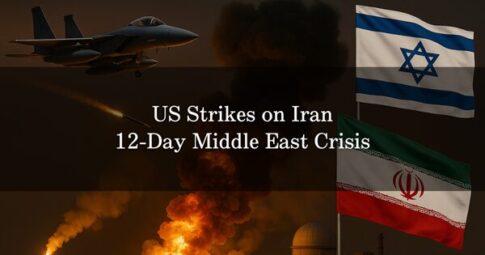
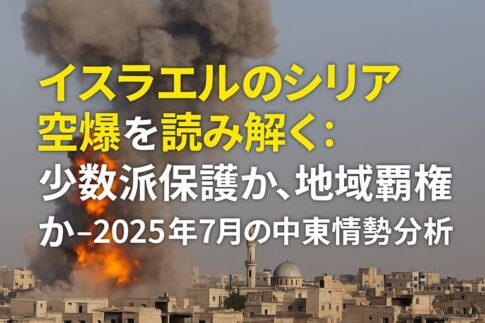
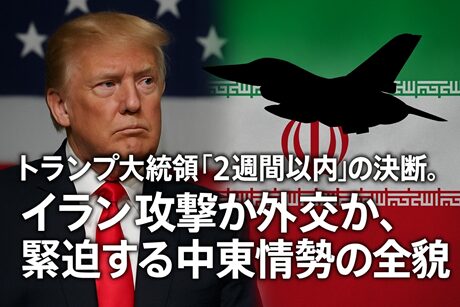
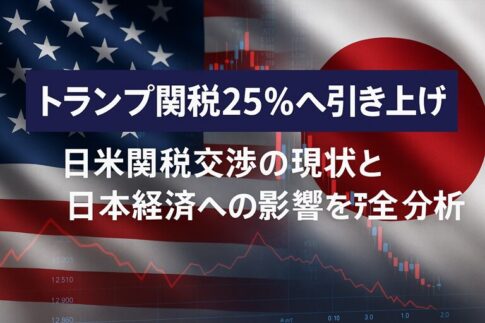

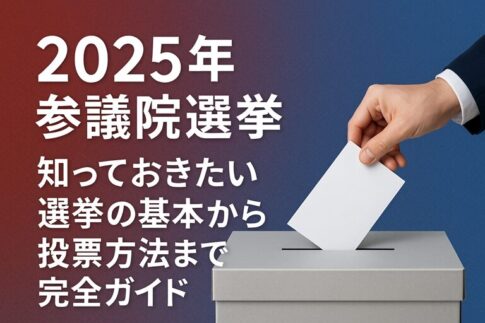




Leave a Reply